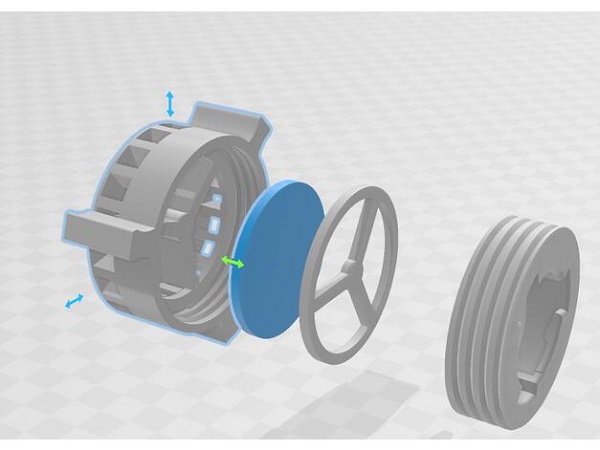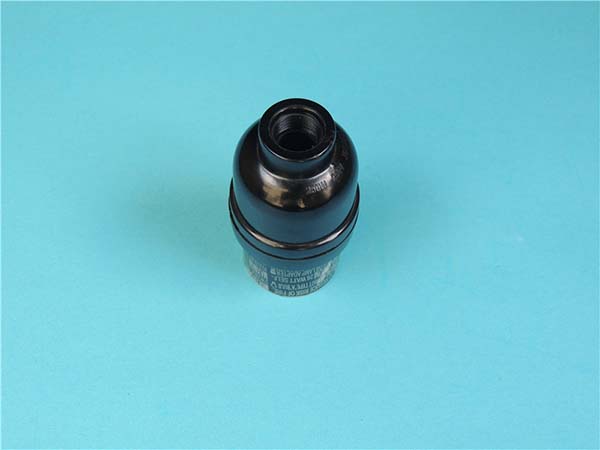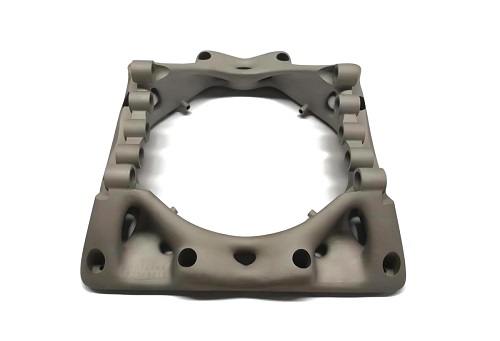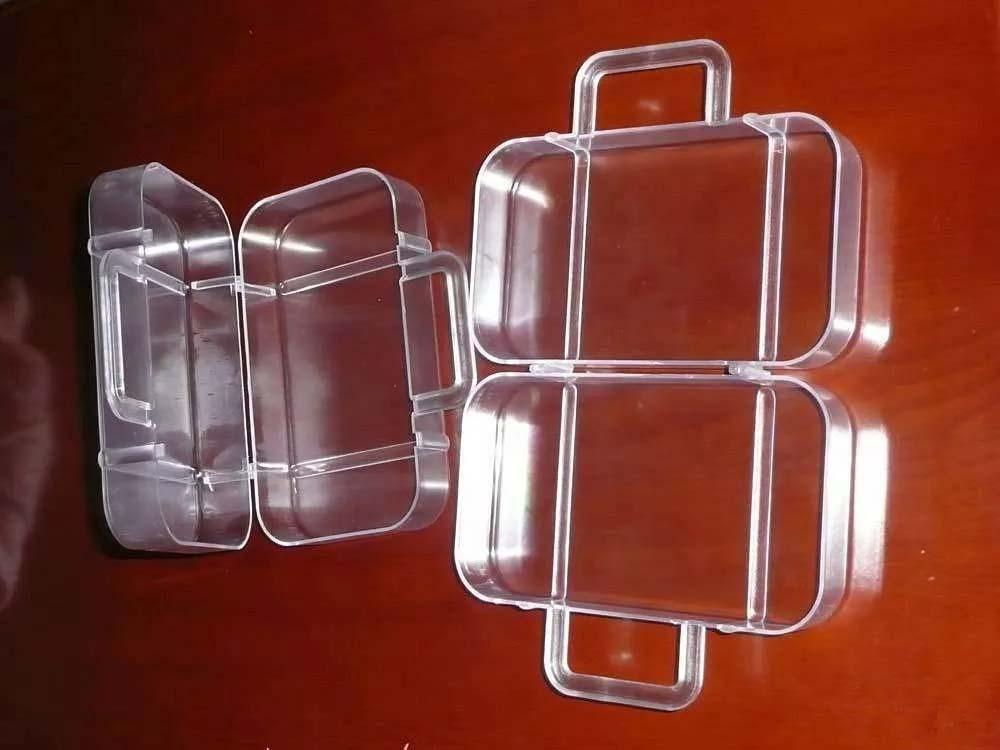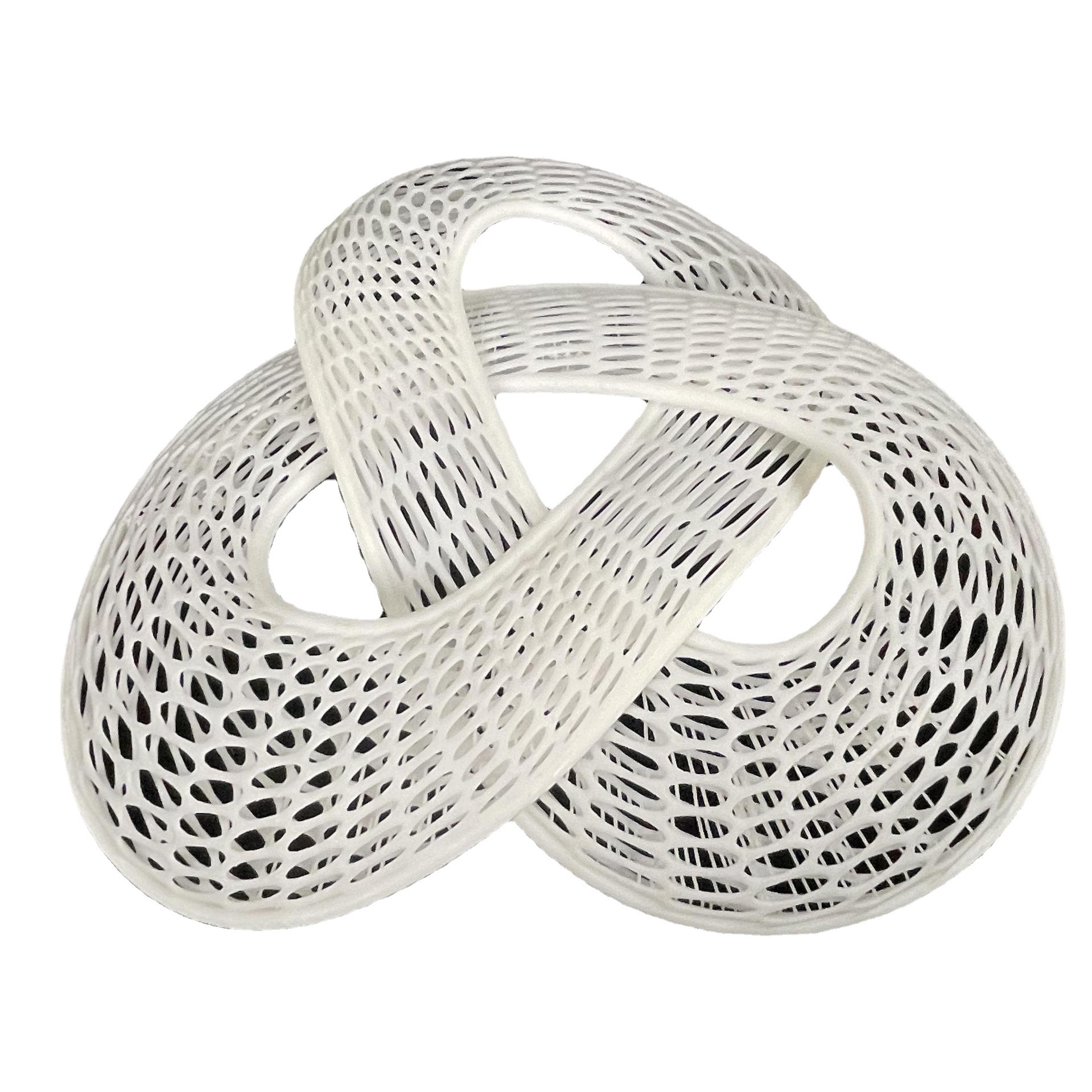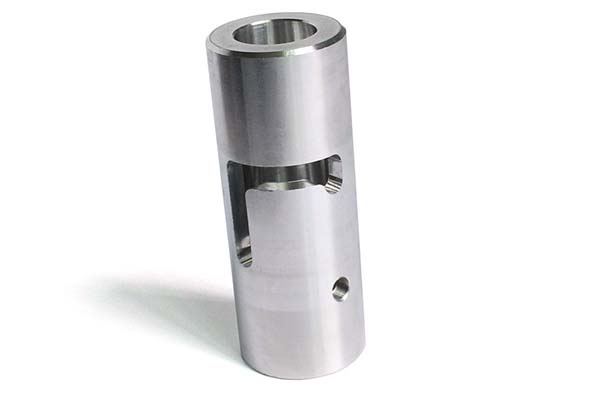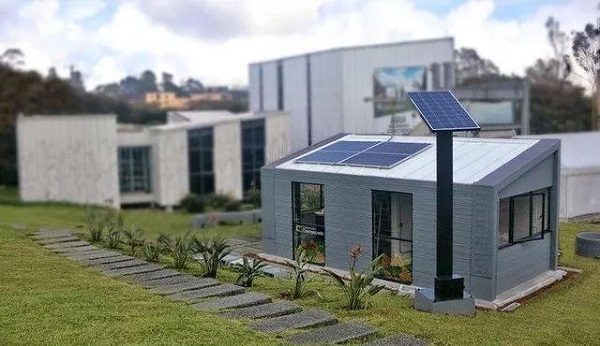If you’ve ever wondered what makes a 3D character move its arms or a robot twist its waist in games, movies, or even product demos, the answer lies in articulated 3D models. Simply put, an articulated 3D model is a three-dimensional digital object made up of connected segments (called “rigid bodies”) that can move relative to each other using joints—just like how your bones connect at your elbows or knees. Unlike static 3D models (which can’t move), articulated models are designed for animation and interaction, making them essential for any project that needs movement, from video game characters to industrial simulations.
Now that we’ve cleared up the basics, let’s dive deeper into how these models work, how to create them, where they’re used, and how to choose the right tools for your needs.
What Makes Up an Articulated 3D Model? Key Components Explained
To understand articulated 3D models, you first need to know their core building blocks. Every functional articulated model has two main parts: rigid bodies and joints. Let’s break them down, plus a third critical element—rigging—that brings everything together.
1. Rigid Bodies: The “Bones” of the Model
Rigid bodies are the solid, non-deformable parts of the model. Think of them as the skeleton: for a human character, this would include the upper arm, forearm, thigh, and calf. For a robot, it might be the torso, shoulder plates, and hand segments. These bodies don’t bend on their own—their movement is controlled entirely by the joints connecting them.
A common mistake beginners make is making rigid bodies too complex. For example, when creating a simple chair model with movable legs, each leg should be a separate rigid body (not part of the seat). This keeps the animation smooth and easier to adjust.
2. Joints: The “Hinges” That Enable Movement
Joints are the connectors between rigid bodies, and they dictate how the model can move. Not all joints work the same—some allow rotation, others sliding, and some a combination. Below is a table of the most common joint types, their functions, and real-world examples:
| Joint Type | Movement Allowed | Example Use Case |
| Revolute (Hinge) | Rotation around one axis (like a door) | Character elbow, door hinge in a scene |
| Prismatic (Sliding) | Linear movement along one axis | Drawer opening, robot arm extending |
| Spherical (Ball-and-Socket) | Rotation around two or three axes | Character shoulder, hip joints |
| Fixed | No movement (locks two bodies together) | Attaching a handle to a door |
| Universal | Rotation around two perpendicular axes | Steering wheel in a vehicle model |
3. Rigging: The “Nervous System” of Animation
Rigging is the process of adding joints, controls, and constraints to an articulated model so it can be animated. Think of it as adding strings to a puppet—animators use these controls to move the model’s parts without altering the original 3D geometry.
For example, when I worked on a short animated film last year, we created a dog character. Its rig included:
- Spherical joints for the hips (to let the legs move forward/backward and side-to-side)
- Revolute joints for the knees (to only bend forward)
- Controls for the tail (a chain of small joints to make it wag smoothly)
Without rigging, even a model with perfect rigid bodies and joints would be impossible to animate efficiently. Most professional projects use rigging tools that let animators adjust movement limits—like preventing a character’s elbow from bending backward, which would look unrealistic.
How to Create an Articulated 3D Model: A Step-by-Step Guide (With Examples)
Creating an articulated 3D model doesn’t have to be intimidating—even if you’re new to 3D design. Below is a practical, step-by-step process that works for most projects, from simple props to complex characters. I’ll use a “movable robotic arm” as an example to make it concrete.
Step 1: Define Your Model’s Purpose and Movement Needs
Before you start designing, ask: What will this model do? This determines how many rigid bodies and joints you’ll need. For our robotic arm, the goal is to “pick up a small object and move it to a shelf.” So we need:
- A base (fixed to the ground)
- A lower arm segment
- An upper arm segment
- A claw (to grip the object)
- Joints for the shoulder (to lift the arm), elbow (to bend it), and claw (to open/close)
Skipping this step often leads to overcomplicating the model. For example, if you add extra joints to the robotic arm that don’t affect its ability to pick up objects, you’ll just make rigging and animation harder.
Step 2: Model the Rigid Bodies (Keep It Simple)
Use 3D modeling software (like Blender, Maya, or Fusion 360) to create each rigid body as a separate object. For the robotic arm:
- Create a cube for the base (10cm x 10cm x 2cm).
- Make a cylinder for the lower arm (8cm long, 1cm radius).
- Make a smaller cylinder for the upper arm (6cm long, 1cm radius).
- Create two small prisms for the claw (each 3cm long).
Pro tip: Avoid adding too many details (like textures or small bumps) at this stage. Focus on the shape and size of each segment—you can add details later.
Step 3: Add Joints and Set Movement Limits
Once your rigid bodies are ready, it’s time to connect them with joints. Using Blender (a free, popular tool) as an example:
- Select the base and lower arm, then add a spherical joint at their connection point (the “shoulder”). Set it to only rotate up/down and left/right (no twisting).
- Connect the lower and upper arm with a revolute joint (the “elbow”). Limit its rotation to 0–90 degrees (so it bends like a real arm, not backward).
- Add a prismatic joint to the claw segments so they slide toward each other (to grip) and apart (to release).
Step 4: Rig the Model for Animation
Next, add controls to make the model easy to animate. In Blender:
- Create “control objects” (like small circles) near each joint. These let you move the arm by dragging the circle, instead of selecting the joint directly.
- Link the controls to the joints: For example, dragging the “elbow control” circle rotates the revolute joint.
- Test the movement: Try lifting the arm, bending the elbow, and closing the claw. If something moves incorrectly (e.g., the elbow twists), adjust the joint limits.
Step 5: Test and Refine
The final step is to test the model in a real scenario. For our robotic arm, we animated it picking up a small cube (the “object”) and moving it to a shelf. During testing, we realized the claw wasn’t gripping tightly enough—so we adjusted the prismatic joint’s movement range to make the claw segments slide closer.
Real-World Applications of Articulated 3D Models (With Data)
Articulated 3D models aren’t just for games and movies—they’re used in industries from healthcare to manufacturing. Below are the most common use cases, with real data and examples to show their impact.
1. Video Games and Animation: Bringing Characters to Life
In gaming, almost every playable character is an articulated 3D model. According to a 2024 report by the Entertainment Software Association (ESA), 90% of top-selling games use articulated models for characters and interactive objects (like doors or vehicles).
For example, in The Legend of Zelda: Tears of the Kingdom, Link’s articulated model has over 50 joints—allowing him to climb, swing a sword, and glide. Animators use these joints to create realistic movement: when Link jumps, his knees bend slightly, and his arms swing for balance—details that make the game feel immersive.
2. Manufacturing and Robotics: Designing and Testing Machines
Manufacturers use articulated 3D models to prototype robots and machinery before building physical versions. A study by McKinsey found that this reduces development time by 30–40% and cuts costs by up to 25%.
Take Tesla’s factory robots: Before building a new robotic arm for assembling cars, Tesla’s engineers create an articulated 3D model. They test how the arm moves around the car frame, adjust joint limits to avoid collisions, and even simulate wear and tear—all without wasting materials on physical prototypes.
3. Healthcare: Training and Patient Education
In healthcare, articulated models help train doctors and explain conditions to patients. For example, a 3D model of the human spine (with articulated vertebrae) lets medical students practice adjusting a patient’s posture or simulating how a herniated disc affects movement.
A 2023 study in the Journal of Medical Education found that medical students who used articulated 3D models scored 15% higher on spine anatomy tests than those who used traditional textbooks. Patients also benefit: A survey by the American Medical Association (AMA) showed that 82% of patients understand their condition better when doctors use 3D models to explain it.
4. Product Design and E-Commerce: Showcasing Adjustable Products
E-commerce brands use articulated 3D models to let customers see how products work. For example, a furniture brand might add an articulated model of a foldable chair to its website—customers can click to fold/unfold the chair, rotate it, and see how it fits in a room.
Amazon’s 2024 Seller Report found that products with interactive articulated 3D models have a 22% higher conversion rate than those with only photos. Why? Because customers feel more confident buying a product when they can see how it moves and adjusts.
Choosing the Right Tools for Articulated 3D Modeling (Free vs. Paid)
The tool you use depends on your budget, skill level, and project needs. Below is a comparison of the most popular tools, with pros, cons, and best use cases.
| Tool | Cost | Skill Level | Best For | Key Features |
| Blender | Free (Open-Source) | Beginner to Pro | Independent creators, students, small teams | Built-in rigging tools, animation timeline, large community |
| Autodesk Maya | $1,775/year | Intermediate to Pro | Professional animation, gaming, film | Advanced rigging (e.g., facial rigs), integration with other Autodesk tools (e.g., 3ds Max) |
| Autodesk Fusion 360 | Free for hobbyists; $60/month for professionals | Beginner to Intermediate | Manufacturing, robotics, product design | Parametric modeling (easy to adjust sizes), simulation tools for testing movement |
| Cinema 4D | $99/month | Intermediate | Motion graphics, product visualization | User-friendly interface, fast rigging for simple models |
My Personal Recommendation
If you’re new to articulated 3D modeling, start with Blender. It’s free, has tons of tutorials (YouTube channels like “Blender Guru” have step-by-step guides for rigging), and can handle most projects—from simple props to complex characters.
For professional manufacturing or robotics work, Fusion 360 is better because it lets you simulate how your model will perform in real life (e.g., how much weight a robotic arm can lift). For Hollywood-style animation, Maya is the industry standard—used by studios like Pixar and Disney.
Yigu Technology’s Perspective on Articulated 3D Models
At Yigu Technology, we believe articulated 3D models are a bridge between digital innovation and real-world utility. In our work with manufacturing clients, we’ve seen how these models transform product development: one client cut their robot prototyping time by 35% using articulated models, letting them launch products 6 months faster. For healthcare partners, we’ve built interactive spine models that help patients grasp treatment plans—reducing confusion and improving compliance. As AI and real-time rendering advance, we expect articulated models to become even more accessible, letting small businesses and educators create dynamic content without expert skills. The future isn’t just about making models move—it’s about making them work for people.
FAQ About Articulated 3D Models
1. What’s the difference between an articulated 3D model and a rigged 3D model?
An articulated 3D model refers to the structure (rigid bodies + joints), while a rigged model is the animated version (articulated model + controls for movement). Think of it this way: All rigged models are articulated, but not all articulated models are rigged (you can have an articulated model without the controls to animate it).
2. Do I need coding skills to create an articulated 3D model?
No—most 3D software (like Blender or Maya) lets you create articulated models using visual tools (dragging, clicking, and setting parameters). You only need coding if you want to add advanced features (e.g., making a robot model respond to sensor data in real time).
3. Can I use articulated 3D models in virtual reality (VR)?
Yes—articulated models are essential for VR because they let users interact with objects realistically. For example, in a VR training simulation for mechanics, an articulated model of a car engine lets users move parts (like the fan or belts) with their hands.
4. How long does it take to create an articulated 3D model?
It depends on complexity: A simple model (like a foldable chair) can take 1–2 hours. A complex model (like a human character with facial expressions) can take 10–20 hours. Rigging adds extra time—expect to spend 2–5 hours rigging a simple model, and 20+ hours for a complex one.
5. Are there pre-made articulated 3D models I can use?
Yes—websites like TurboSquid, CGTrader, and Sketchfab have thousands of pre-made articulated models (from characters to robots). Prices range from \(10 for simple models to \)500+ for professional, game-ready ones. Just make sure to check the license (some are for personal use only, others for commercial projects).
